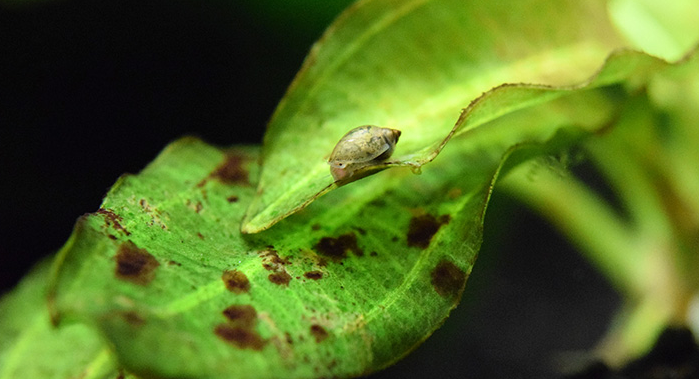Algae & Waste Control Crews for your aquarium

Algae!
This must be the most familiar plant matter to all aquarium keepers, regardless if you are growing plants, just keeping fishes, shrimps or such. As long as there is light, water and nutrients, there will be algae!
In this short article, we show you some of the common and easily available algae control crews that you can get for your tank!
Snails

Septaria porcellana (Abalone Snail)
Commonly know as the abalone snail, the Septaria porcellana is one of the best cleaner you could ever ask for. A small team of them will keep your glass wall sparklingly clean. They also do their munchies on rocks, wood surfaces and even leaves. The only drawback is that they will live eggs on the surface as well. But fear not, they only hatches if you are keeping them in brackish condition.

Clithon corona (Horned Nerite Snail)
The Horned Snail is usually sold at a small size of around 1cm or less, but are capable of growing up to 1" in diameter (usually up to 1/2" only). They are helpful in keeping algae on glass wall and rocks in check although less efficient compared to the Septaria species. They are, only breed in brackish environment.

Neritina natalensis sp. "Zebra" (Zebra Nerite Snail)
A Zebra Nerite Snail shell is golden-brown in color. The shell looks more smooth in texture compared to other grooved-shell Nerite Snails. A Zebra Nerite Snail shell has black stripes running back from the aperture to the apex creating a zebra-like look. They seek out green spot algae as well as the moss-like green beard variety

Neritina natalensis sp. "Tiger" (Tiger Nerite Snail)
A Tiger Nerite Snail has a light brown shell looking more smooth than ridged in texture. Tiger Nerite shells are accented with black areas forming patterns resembling tiger stripes or leopard spots. They too, seek out green spot algae as well as the moss-like green beard variety

Planorbis rubrum (Ramshorn Snail)
Ramshorn snails reach sizes up to 2 centimeters and have a brown or red coloring. Ordinarily, they do not consume freshwater aquatic plants unless they are taxed for algae, which could put Hygrophila and similar plants on their menu.
They concentrate on algae-covered plants, tank rocks, aquarium glass and other decorations. They will not pass up detritus, fish eggs and leftover food.
Shrimps

Caridina gracilirostris (Red Nosed Shrimp)
The Red Nosed Shrimp is native to the coastal areas of India and Southeast Asia. Caridina gracilirostris has a nearly transparent body, and with an elongated red rostrum on its head. This red rostrum is the basis for many of the common names given to it, like the rhino shrimp and the mosquito shrimp.
The Red Nosed Shrimp is good at most furry algae such as green hair, black hair type algae. For best results, keep them in numbers of 10s. For badly infest tank, its not uncommon to solve the problem fast by adding 30-50s for a 90cm tank.

Caridina multidentata (Amano / Yamato Shrimp)
The Amano shrimp is a very popular and active algae-eating species. They are ravenous eaters, consuming not only most algae, but eat dead plant castoff material (detritus) and clean the tank of leftover food.
They are quite small, averaging between 3.5 to 5 centimeters, making them ideal for a smaller tank. They only resist eating blue-green and green spot algae.

Sturisoma sp. (Royal Farlowella Catfish)
The Twig Catfish is a delicate, suckermouth algae-eating catfish, also known as the Whiptail Catfish. They average 10 to 20 centimeters in length with a brownish, slender body.
It consumes most species of algae but its diet should be supplemented with algae tablets a couple times a week.






